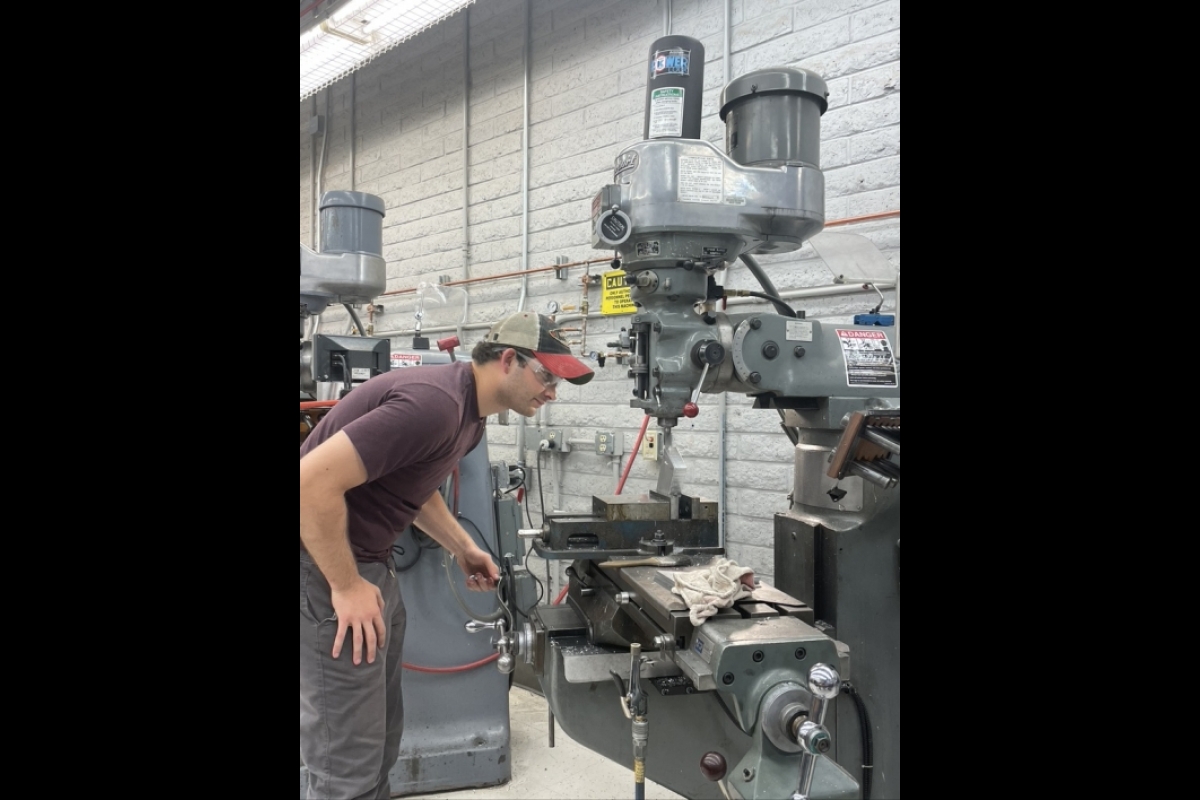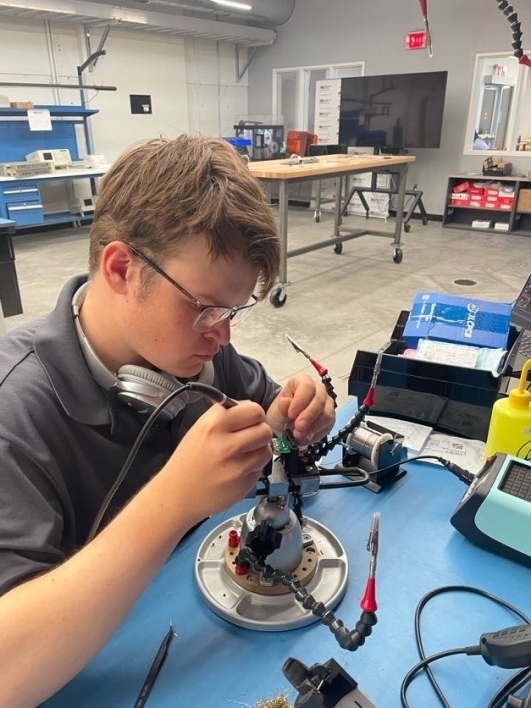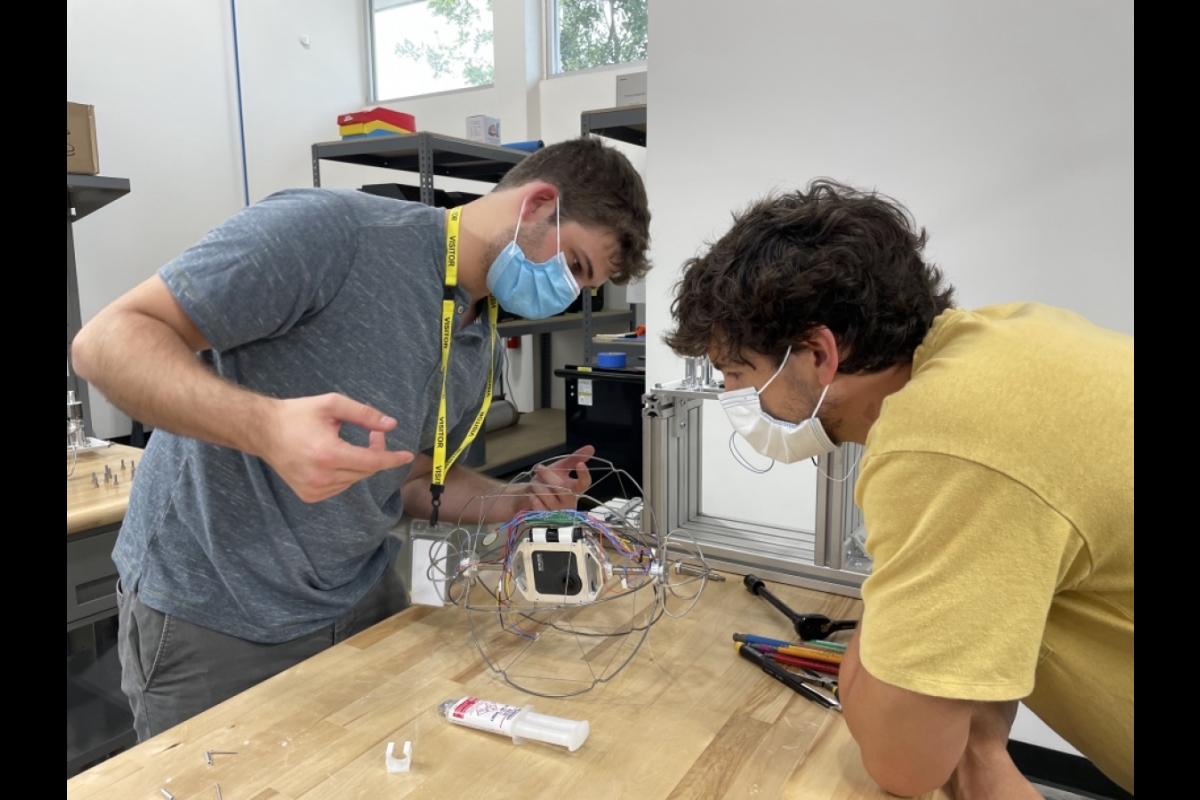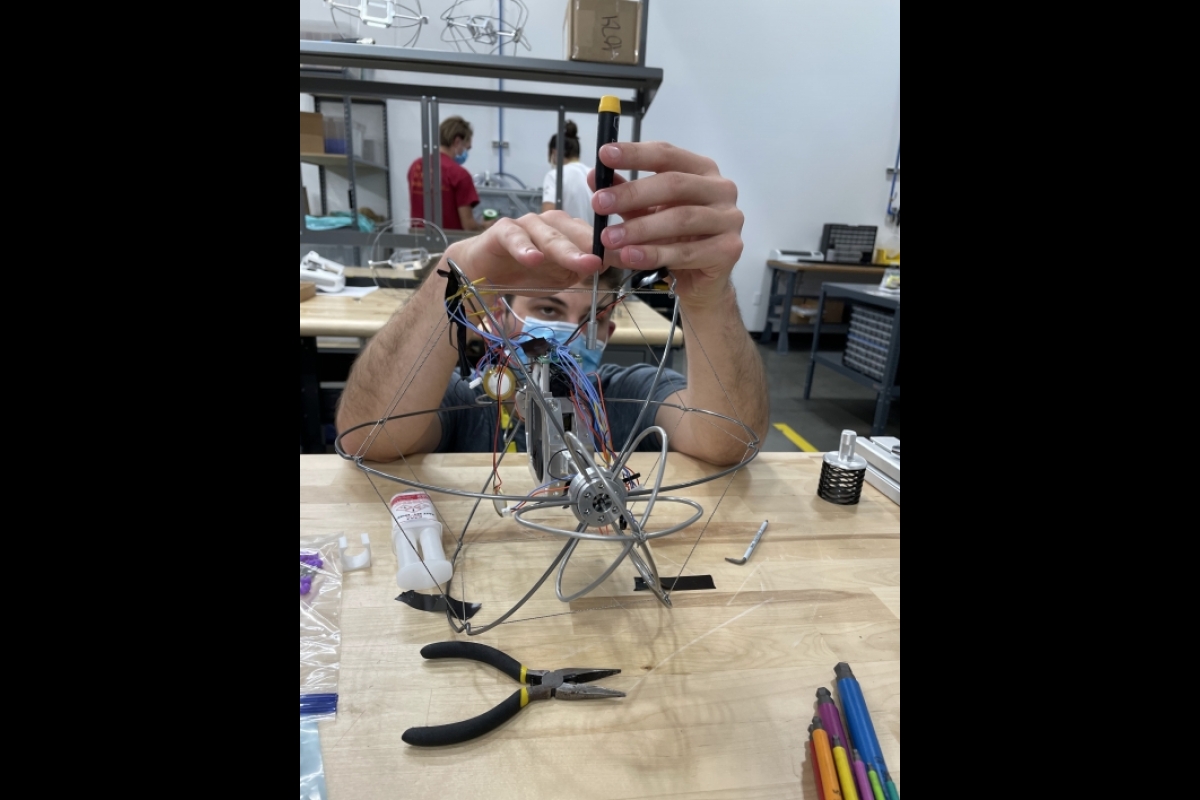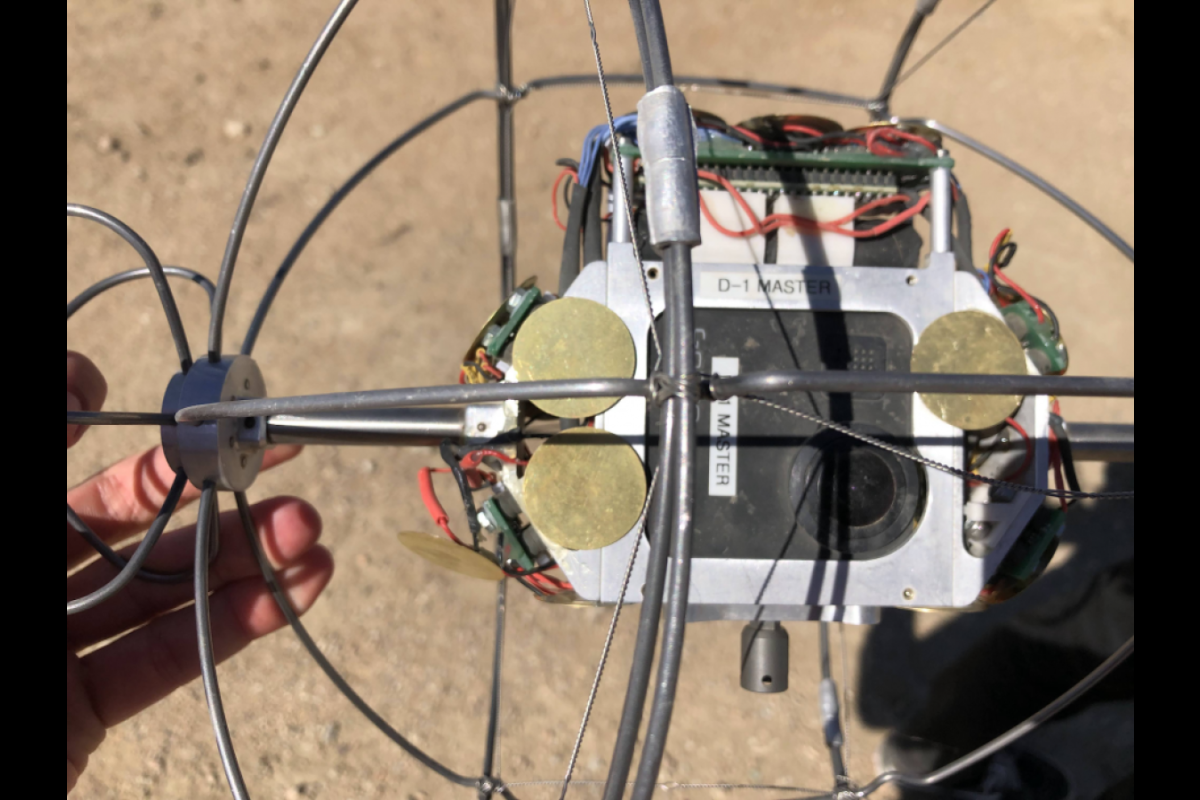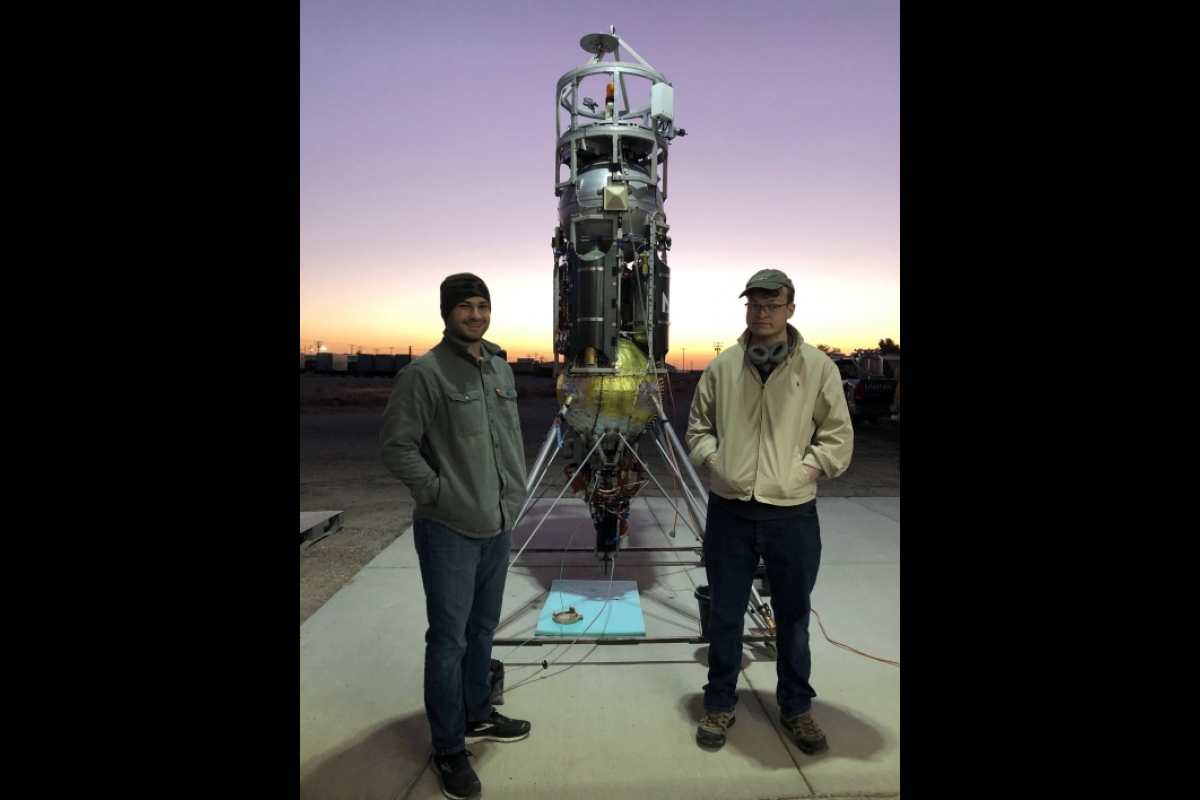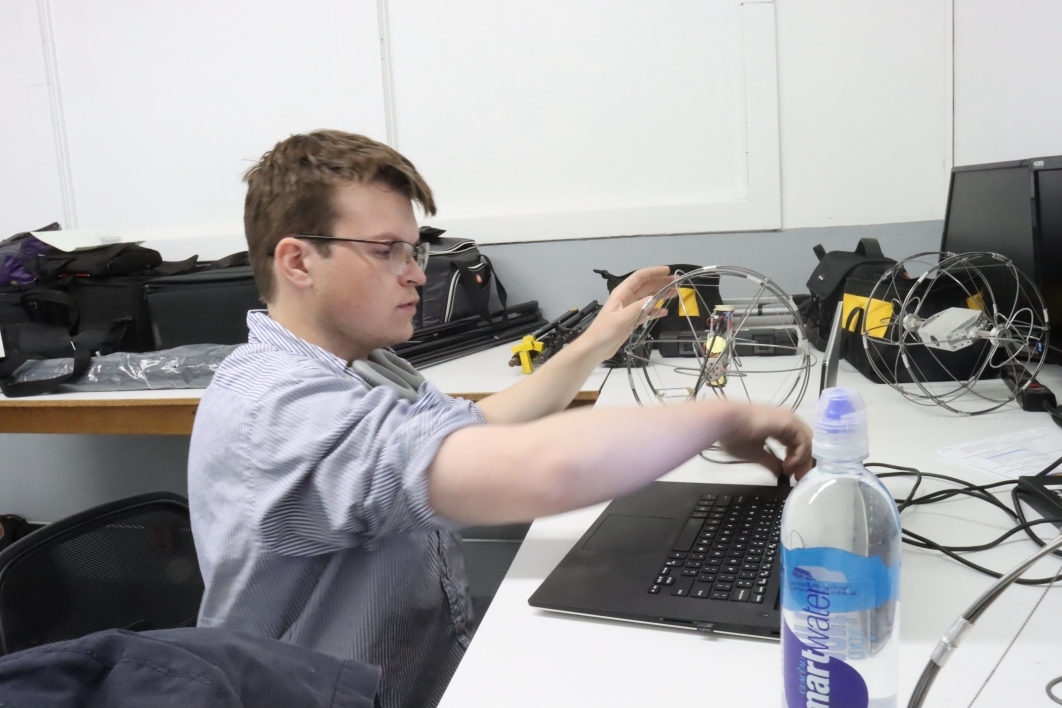Student 'lifeguards' in ASU's Interplanetary Initiative Lab assist in NASA mission
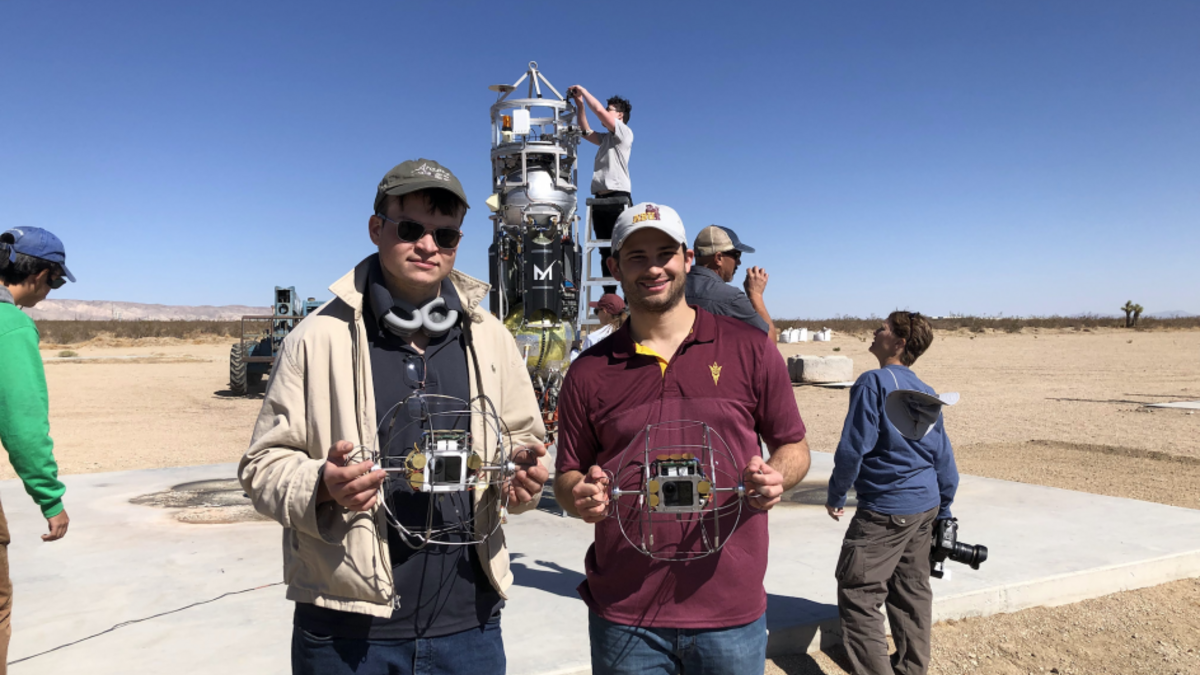
Students Christopher McCormick and Matthew Adkins attend the ExoCam launch.
Arizona State University students working at the Interplanetary Initiative Lab, nicknamed “lifeguards” for their essential role in managing the lab, contributed to a NASA mission whose goal is to provide ground footage of NASA vehicles landing on the moon and to capture rocket exhaust plume data, which allows scientists to study the geology of the surface where the rocket lands.
In May 2021, Danny Jacobs, the Interplanetary Initiative associate director and associate professor at ASU's School of Earth and Space Exploration, approached the lifeguards with a challenge. A colleague needed someone to design sensors for a novel experiment with a flight test only a few months away.
We’ve all seen a rocket landing from above, but this project aimed to capture one from the ground perspective. Undergraduate student Christopher McCormick and graduate student Matthew Adkins — both with the lab since 2020 — took up the challenge.
ExoCam is a prototype sensor that is dropped from a rocket as it’s landing. Once on the ground, it captures footage of the landing from the ground and measures impacts of particles kicked up by the lander. A 360 degree camera is suspended inside an impact-absorbing cage. The camera body is barnacled on all sides by impact sensors.
The Interplanetary Initiative Lab joined the project team in May 2021 with the goal of supporting an early fall flight test. During that time, the team chose a sensor technology, made a prototype and delivered a final version.
The team then traveled to Pasadena, California, where the prototype was integrated into the mechanical system built by Honeybee Robotics, which was then tested in a dress-rehearsal drop test from a bridge. After some minor revisions, the completed system was integrated onto a rocket-lander test vehicle built by Masten Space Systems in Mojave, California. The rocket was flown to a height of 75 feet, where it then ejected the ExoCam, dropping it to the desert floor, where it recorded the landing in audio, video and particle impacts.
McCormick and Adkins had full use of the resources the Interplanetary Initiative Lab offers for the project. Resources like the lab’s vibe table, electronics room, 3D printer and mechanical tool sets were invaluable to their mission.
“This lab was what I wanted in college. You can actually do hands-on stuff. You’re not just on a computer working with numbers. There’s freedom to use all the tools and freedom to use them any time of day,” McCormick said.
“As a young engineer, it’s hard to get opportunities to be part of a demonstration flight. It’s very rare that you get to do that, let alone run the project as students, so it was a lot of experience that I couldn’t get anywhere else,” Adkins added.
The short turnaround time pushed McCormick and Adkins to their limits, working late into the night in the lab.
“It’s not the case that just any student can do what they did. They already had a lot of experience in electronics, mechanical design and making things and debugging them. Even still, it pushed them right to their limits. I’m really proud of them,” Jacobs said.
More Science and technology

Cracking the code of online computer science clubs
Experts believe that involvement in college clubs and organizations increases student retention and helps learners build valuable…
Consortium for Science, Policy & Outcomes celebrates 25 years
For Arizona State University's Consortium for Science, Policy & Outcomes (CSPO), recognizing the past is just as important as…

Hacking satellites to fix our oceans and shoot for the stars
By Preesha KumarFrom memory foam mattresses to the camera and GPS navigation on our phones, technology that was developed for…
